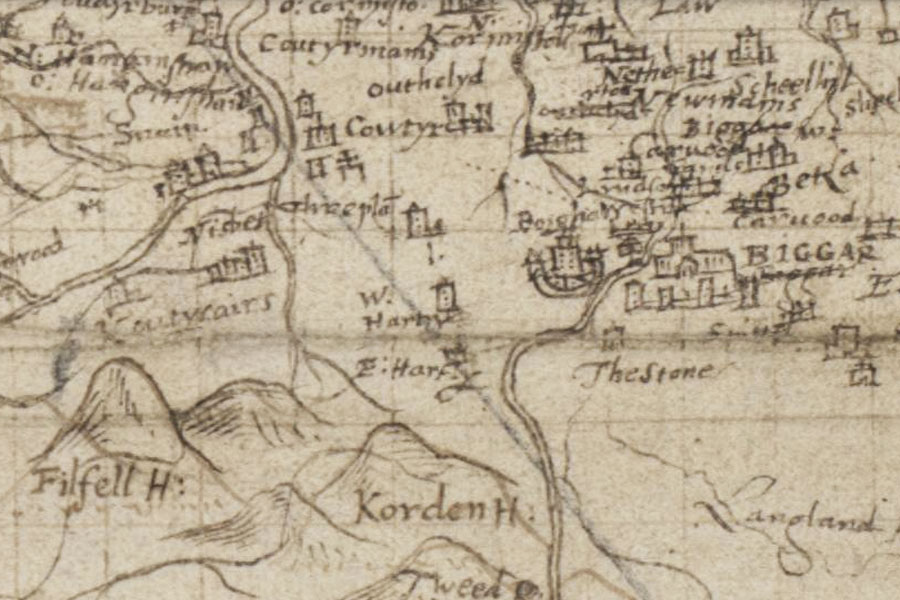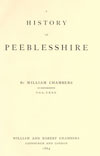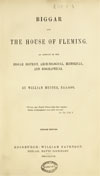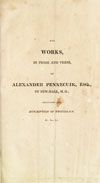

Hartree Tower was a castle dating back to at least the 16th century, but was demolished in the late 18th century.
The lands of Hartree, along with those of Kilbucho, are said to have originally been owned by the Flemings of nearby Boghall Castle, later coming into the possession of the Douglas Lords of Dalkeith.
The Broun or Brown family lived at Hartree in 1376, and possibly earlier, who were allied with the Douglas family. The lands of Hartree were resigned by James of Tuedy in 1389, presumably back to the Douglas family, and later passed to the Broun or Brown family.
A Richard Broun of Hartree is mentioned in a deed from 1409. He married Elizabeth, daughter of Walter Tweedie of Drumelzier, who was a granddaughter of James Douglas, the 1st Lord Dalkeith. Douglas confirmed the Brouns’ possession of Hartree in a charter of 1424.
Who built the first castle at Hartree and at what date is unknown, however the Browns are thought to have built, or modified, a tower standing on a knoll, surrounded by marshland, in the 16th century. It was apparently clearly visible from Biggar.
In 1536 a later Richard Brown, described as the son and heir-apparent of Andrew Brown of Hartree, was granted the property of East, or Easter, Hartree by his father-in-law, Malcolm Fleming, the 3rd Lord Fleming, having married Lord Fleming’s daughter Janet.
Hartree Tower remained in the Brown family until 1645 when John Dickson received a charter from the Earl of Traquair conferring on him several estates including that of Hartree, becoming the founder of the family of Dickson of Hartree and Kilbucho. A lawyer by profession, he became an Advocate in 1649, and took his seat as Lord Hartree.
The Dicksons are said to have done some work to the tower, and continued living in it until 1775. It was finally demolished by Colonel Alexander Dickson some time before 1790, and replaced with a new house, Hartree House, around 200m to the north-west. Several carved stones from the old tower are said to have been incorporated into the offices of Hartree House, including two roll-moulded margins dating back to the 16th century.
A reference from 1810 refers to the mansion house at Hartree being “merely an old tower repaired”, suggesting that an older defensive building was incorporated into Hartree House. A similar quote from 1815 descries Hartree as “a tower-house, eligibly repaired; with extensive improvements in plantations and agriculture.” However other sources are clear that the new House was built at a distance from the old building of Hartree Tower.
Early maps shows that there was a Wester Hartree and an Easter Hartree as far back as the late 16th century, seemingly quite close together and in the approximate positions of Hartree House and the site of Hartree Tower respectively.

Timothy Pont, c.1583-1614map image courtesy of NLS
Pont’s map is quite difficult to read, but in the Blaeu Atlas of Scotland, published in 1654, there is a clearer map based on Pont’s manuscript.

Joan Blaeu, 1654map image courtesy of NLS
Looking at Hartree House it doesn’t necessarily look like a building constructed entirely towards the end of the 18th century, although since it has been added to and modified over the years, it’s tricky to establish what was built when.
A main block running approximately north-west to south-east is three storeys plus an attic in height, and while the windows on its south face are Georgian in design and size, those on the north face are smaller, with carved pediments at roof level over three of the windows.
The floor plan looks to me as though some walls are thicker than others, in particular those at the east end of the main block. Given the map evidence, the references to a repaired tower, the general appearance of the building, and the possibility of thicker walls, it’s tempting to suggest that an earlier building is incorporated within Hartree House.
If that was the case, and it’s a big “if”, it would seem likely that Hartree Tower was the first castle to be built here, and it was followed, perhaps in the 16th century, by a second castle, possibly a tower house, maybe built for a son of the owner of Hartree Tower. Hartree House would then have been built around the second tower in the late 18th century, when the older first tower was demolished.
But I have to stress that this is supposition on my part, and will require more evidence and research to prove one way or the other. For now I will have only one record for these two potential towers, and keep it at the agreed location that is the site of Hartree Tower, as the existence and location of that is not in doubt.
In 1901 the then owner of Hartree House, Archibald Dickson, died unmarried, and the property passed to his younger sister Elizabeth.
In 1948 Hartree House was converted into a hotel, operating as the Hartree House Hotel until 2000 when it was converted back to residential use. The site of Hartree Tower is now occupied by a farm steading, converted for residential use.
Alternative names for Hartree Tower
Haltree; Hartre; Hartrie; Hartry; Hartryk; Harttree; Hertre; Hertrie; Tower of Hartree; W. Hartry
Where is Hartree Tower?
Hartree Tower is in the parish of Broughton, Glenholm and Kilbucho and the county of Peeblesshire.
Grid reference: NT 0469 3600
Lat / long: 55.608237, -3.514503















